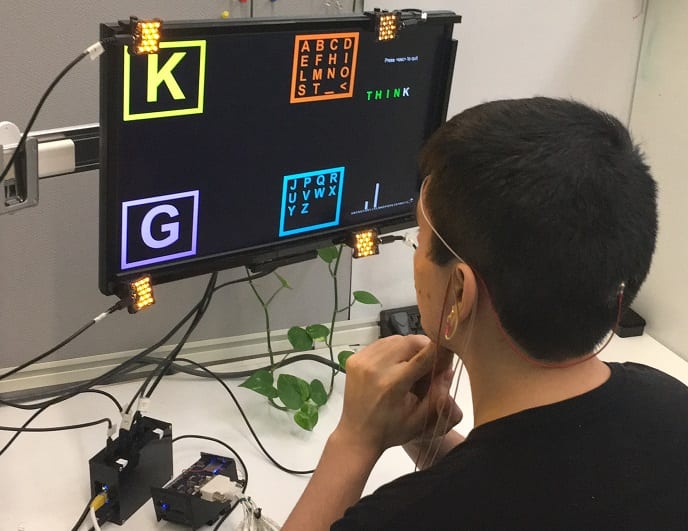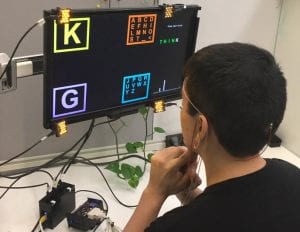RERC on AAC award winner
Fernando Quivira & Matt Higger
Many individuals can benefit from augmentative and alternative communication (AAC) while hospitalized, including regular AAC users and patients with temporary communication impairments (e.g. due to intubation). However, hospitals may not have access to the wide variety of AAC solutions required to serve the entire population of individuals with severe speech and physical impairments (SSPI). Moreover, clinics and smaller hospitals may not have AAC-experienced speech language pathologists on call. Rather than prescribe a one size fits all solution, we have constructed a system that learns and adapts to the user’s capabilities. When access methods are less dependable, we automatically adjust the query pacing so that users in need are given more opportunities to express themselves. In other words, when a user’s physiology precludes them from accurate switch (sip-and-puff, button switch, among others) input, we aggregate the more uncertain inputs until we reach sufficiently high confidence in a letter to move forward in their typing task. By doing so, we support accurate letter prediction for users with less-than-trustworthy access methods. Our system builds on the strength of DASHER but adds stepwise user input (no continuous, fast-paced interface is needed) and explicit error modelling to adapt to each user’s capabilities. Shuffle speller has the potential to enable individuals with SSPI to communicate with their loved ones, relay medically relevant messages, health-care decisions, and set environmental control preferences, which are vitally important in hospital settings.
ShuffleSpeller Design Brief, RESNA_2017
Fernando Quivira and Matt Higger won the 2017 RERC on AAC Student Research and Development Competition. Judge’s comments included:
• I think this is a promising approach for BCI input for AAC and other assistive text entry. It generalizes to other input modalities as well.
• The concept is impressive, because existing BCI technologies are notoriously difficult to train and calibrate – the team’s efforts are admirable, and the results are encouraging.
•This project could be very useful to users that can’t access a standard on-screen keyboard. It could be very beneficial to Eye-Tracking and BCI users.


